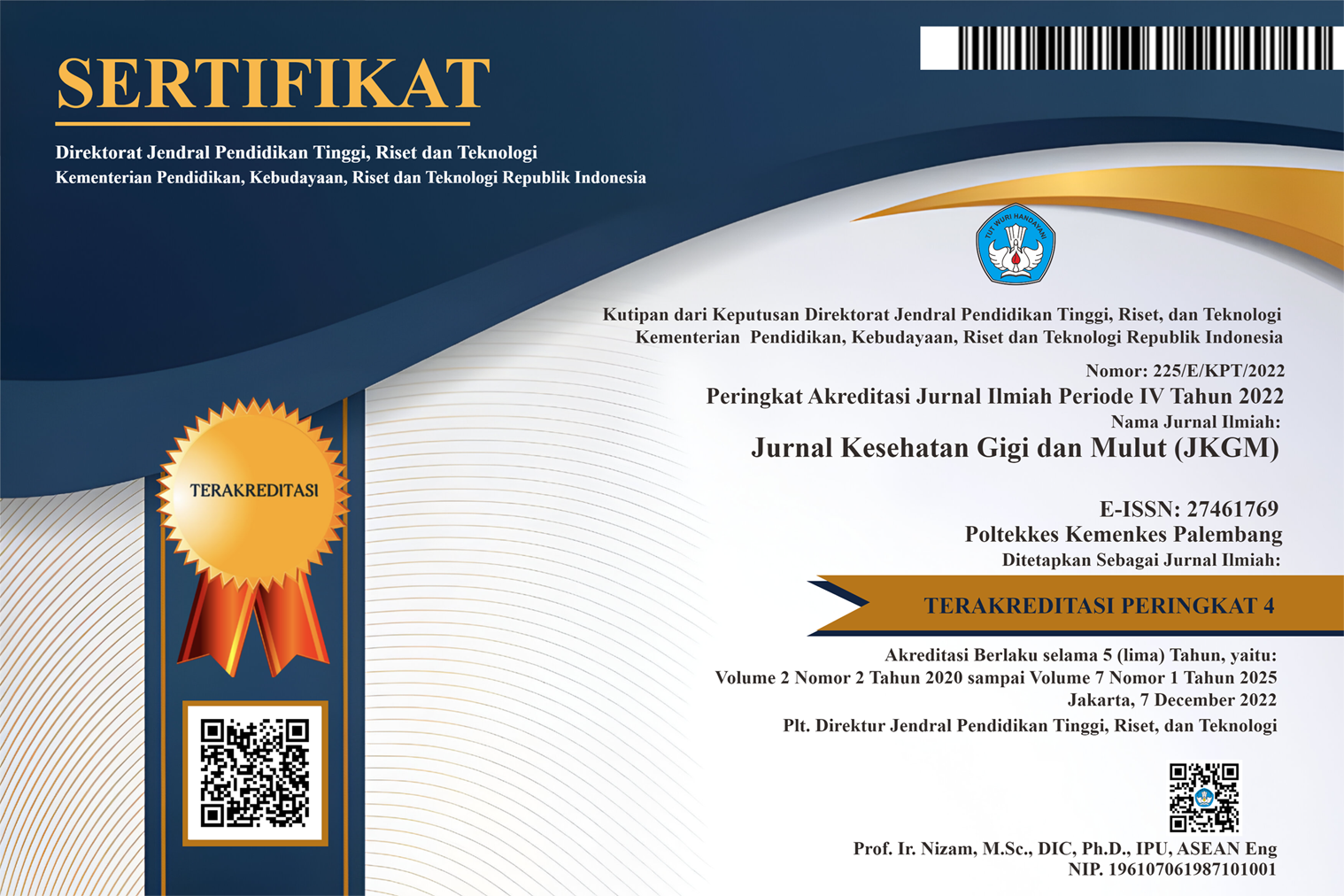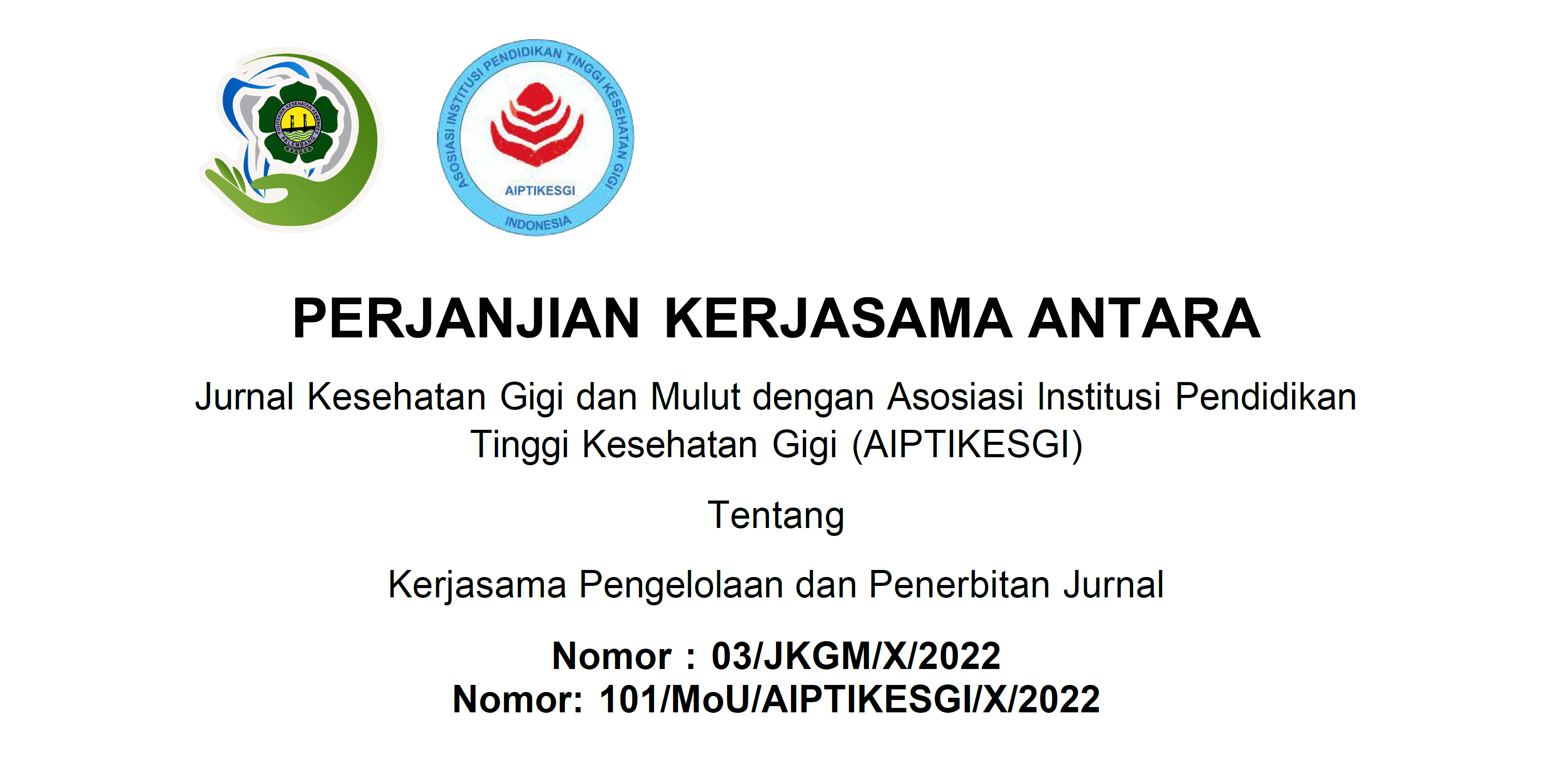TREN PEMILIHAN METODOLOGI PENELITIAN PADA SKRIPSI MAHASISWA PROGRAM STUDI KEDOKTERAN GIGI UNIVERSITAS SRIWIJAYA: SEBUAH TINJAUAN NARATIF
Abstract
Abstrak
Latar belakang: Pemilihan metodologi penelitian yang tepat sangat dibutuhkan dalam suatu penelitian. Keberagaman ini jenis metodologi penelitian mahasiswa ini belum diidentifikasi secara menyeluruh, sehingga belum diketahui arah penelitian yang telah dilakukan. Informasi mengenai trend pemilihan metodologi penelitian dapat dijadikan salah satu acuan untuk membuat kebijakan yang bisa meningkatkan kualitas akademik. Tujuan penelitian ini adalah untuk melakukan analisis terhadap tren pemilihan metodologi penelitian pada skripsi mahasiswa Program Studi Kedokteran Gigi FK Unsri. Metode : Metode yang digunakan dalam penelitian ini adalah deskriptif kualitatif. Penelitian dilakukan pada Program Studi Kedokteran Gigi FK Unsri dengan objek penelitian adalah dokumen skripsi mahasiswa selama 3 tahun terkahir. Data yang diambil dalam penelitian ini sebanyak 191 skripsi mahasiswa dengan rincian tahun 2021 sebanyak 59 skripsi, tahun 2022 sebanyak 73 skripsi, dan tahun 2023 sebanyak 59 skripsi. Hasil : Berdasarkan hasil analisis, maka didapat bahwa mahasiswa kedokteran gigi banyak mengambil jenis penelitian dengan metodologi analitik eksperimental, diikuti dengan studi deskriptif dan analisis observasional pada ketiga tahun terakhir. Tema yang dipilih adalah tema penelitian herbal yang mayoritas dilakukan secara in vitro, diikuti dengan penelitian material kedokteran gigi. Metode ini dipilih karena dapat memberikan hasil yang lebih mudah divalidasi, mudah direplikasi, lebih ekonomis, dan lebih fleksibel. Tema herbal dipilih karena tanaman herbal banyak digunakan oleh masyarakat dan belum pernah dilakukan pengujian sebelumnya. Kesimpulan : Tren pemilihan metodologi penelitian pada skripsi mahasiswa Prodi Kedokteran Gigi FK Unsri adalah analitik eksperimental, dengan tema penelitian herbal yang dilakukan secara in vitro.
Copyright (c) 2024 Jurnal Kesehatan Gigi dan Mulut (JKGM)

This work is licensed under a Creative Commons Attribution-ShareAlike 4.0 International License.
Authors who publish with this journal agree to the following terms:
- Authors retain copyright and grant the journal right of first publication with the work simultaneously licensed under a Creative Commons Attribution License that allows others to share the work with an acknowledgement of the work's authorship and initial publication in this journal.
- Authors are able to enter into separate, additional contractual arrangements for the non-exclusive distribution of the journal's published version of the work (e.g., post it to an institutional repository or publish it in a book), with an acknowledgement of its initial publication in this journal.
- Authors are permitted and encouraged to post their work online (e.g., in institutional repositories or on their website) prior to and during the submission process, as it can lead to productive exchanges, as well as earlier and greater citation of published work















